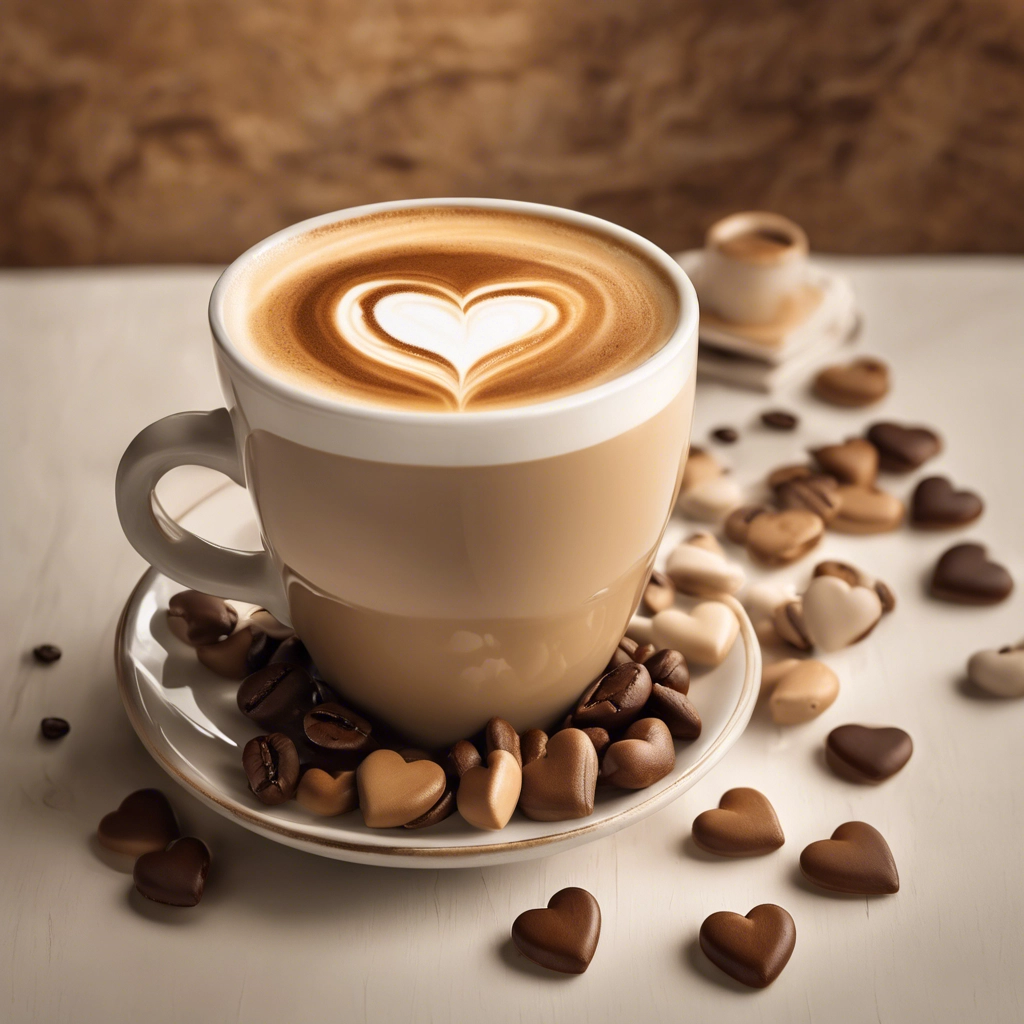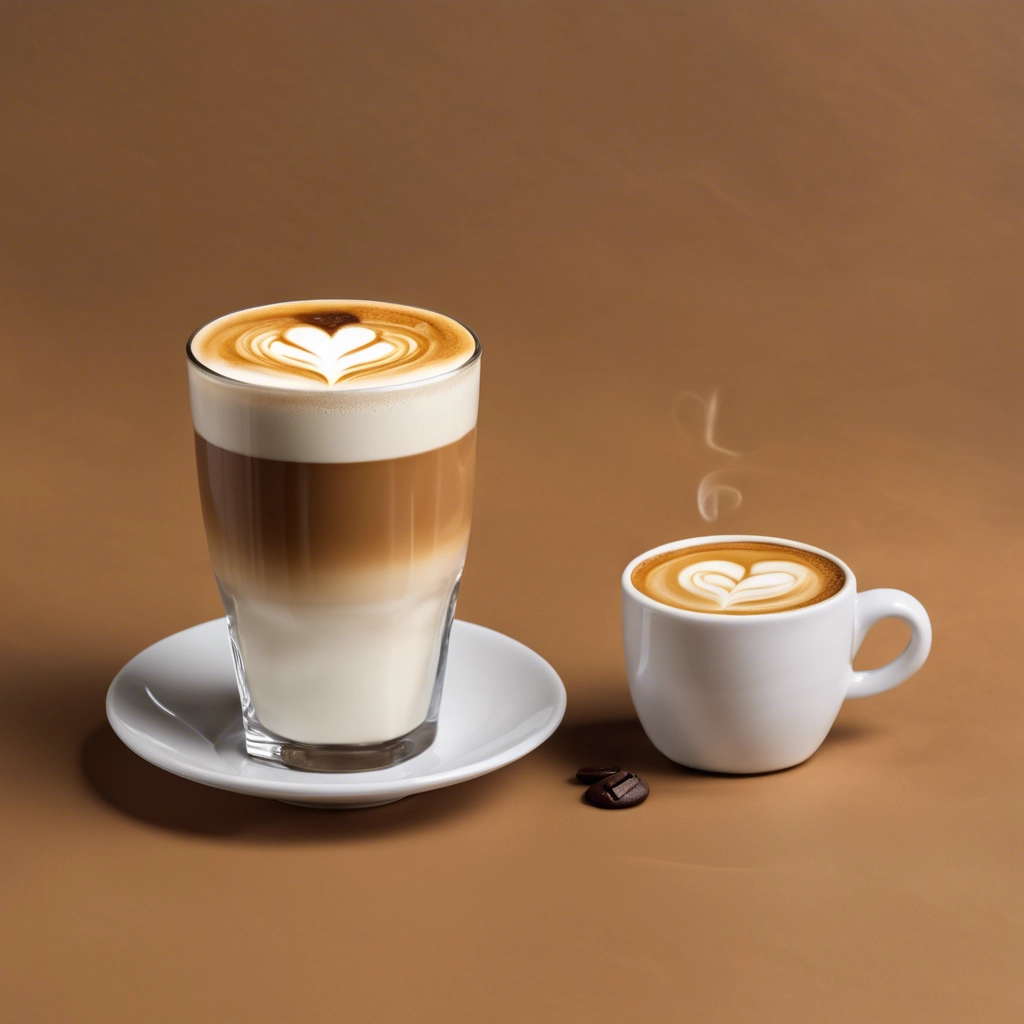Do Lattes Have Caffeine? Unveiling the Buzz Behind Your Favorite Coffee Drink
Hey there, coffee enthusiasts! If you’re casually enjoying your cup of joe and ever wondered, “do lattes have caffeine?”—you’re in the right place. Let’s dive into the relaxing world of lattes, explore their caffeine content, and discover what makes them a beloved choice for coffee lovers of all ages.

What is a Latte?
Do lattes have caffeine? To answer this, let’s first define what a latte is. A latte combines rich espresso with steamed milk, topped off with a light layer of microfoam. This combination results in a smooth and mellow beverage that is perfect for those who prefer a gentler coffee experience. Coffee shops provide the ideal setting to enjoy a latte, offering a cozy ambiance that complements the comforting nature of this popular drink. Whether you’re looking to warm up on a chilly winter day or cool down during a hot summer afternoon, a latte serves as a versatile choice.
Lattes are not only about their soothing warmth and creamy texture; they also come in a variety of flavor options which enhance their appeal. Classic additions like vanilla, caramel, and hazelnut can transform a simple latte into a delightful treat, catering to a range of taste preferences. Seasonal variations such as pumpkin spice in the fall or peppermint during the holiday season are also popular, making the latte a customizable beverage that evolves with the seasons.
Caffeine Content in Lattes
So, do lattes have caffeine? Absolutely! The primary source of caffeine in a latte is the espresso. Typically, a single espresso shot in a small latte packs about 63 mg of caffeine, while a larger double shot latte goes up to about 125 mg. It’s essential to remember that the milk in a latte doesn’t contain caffeine; the caffeine content comes solely from the espresso. This aspect of lattes makes them a customizable option for those looking to manage their caffeine intake without sacrificing the pleasure of a good coffee. Here are a few key points to keep in mind about the caffeine content in lattes:
- Espresso Base: Since the caffeine in a latte comes exclusively from the espresso, the total caffeine content depends on the number of espresso shots you choose. Single, double, and triple shots all have different amounts each shot of espresso adds about 63mg of caffeine.
- Size Matters: The size of the latte affects the caffeine content significantly. A typical small latte usually has one shot of espresso, while medium or large sizes might contain two or more, doubling or tripling the caffeine.
- Customization: For those sensitive to caffeine, requesting a single shot in a larger size latte can maintain the flavor with less caffeine. Conversely, espresso lovers can ask for an extra shot if they need a stronger caffeine kick.
- Milk Does Not Add Caffeine: It’s worth repeating that the milk, whether dairy or plant-based, does not contribute any caffeine. This means that the creamy texture and volume of milk in your latte enhance the drinking experience without increasing the caffeine level.
Understanding these elements can help you better customize your latte to suit your caffeine needs while enjoying the rich, creamy texture that lattes are known for. Whether you’re looking for a mild morning starter or a robust afternoon pick-me-up, adjusting the espresso content in your latte can provide just the right balance.
But to recap about 65 mg for a small latte and 125 mg of caffeine in a medium to large latte

Latte vs.Espresso
Understanding the difference between a latte and an espresso is key to appreciating their unique qualities. An espresso is a concentrated coffee brewed by forcing hot water through finely-ground coffee beans, known for its intense flavor and high caffeine concentration. In contrast, a latte mixes this bold espresso with a larger amount of steamed milk, which dilutes the intensity and caffeine per volume but delivers a creamier texture and more balanced flavor.
How Much Caffeine is in a Latte?
How much caffeine in a latte can vary depending on the size and the number of espresso shots used. As mentioned, a single shot latte generally contains about 63 mg of caffeine. If you opt for a double shot, expect around 125 mg. It’s a milder caffeine kick compared to straight espresso, making it an ideal choice for those who prefer a less intense coffee experience.
Latte vs. Espresso: Comparing Caffeine
When comparing latte vs. espresso regarding caffeine content, the espresso will always come out stronger by volume because it’s less diluted. A single shot of espresso might contain the same amount of caffeine as a single shot latte, but the espresso’s smaller volume makes it more potent.

Popular Latte Variations
Lattes are versatile, and several popular variations cater to all tastes:
Iced Latte: Perfect for warmer days, it combines espresso with cold milk and ice.
Flavored Latte: Add syrups like vanilla, caramel, or hazelnut for a sweet twist.
- Latte Macchiato: Features a mark of espresso on a foamy milk base, usually stronger than a regular latte.
- Regular Latte: Steamed milk and hot coffee
Nutritional Information: What's in Your Latte?
Concerned about what’s in your cup? A typical 16-ounce latte can have about 190 calories and 7 grams of fat, depending on the type of milk used. Opting for skim or plant-based milks can alter these numbers, offering a lower calorie and fat content.
The Art of Latte Preparation
Preparing the perfect latte is an art form that starts with the espresso. The quality of espresso is paramount, as it forms the base of the drink. High-quality beans that are freshly ground can make a significant difference in flavor. The espresso shot should be robust and full-flavored, as it needs to balance the creaminess of the milk. After pulling a perfect shot, the next step is steaming the milk. The goal is to achieve milk that is smooth and velvety, not too frothy, with just enough microfoam to make a light topping for the latte. This requires controlling the steam pressure and the angle and depth of the steam wand to introduce the right amount of air into the milk.
Choosing the Right Milk for Your Latte
The type of milk used in a latte can significantly affect both its taste and texture. Whole milk is traditionally used for its rich flavor and creamy consistency, but there are many alternatives available for those with dietary preferences or restrictions. Skim milk will make a lighter latte with less creaminess, while plant-based options like almond, soy, and oat milk offer unique flavors and are usually lower in calories. Each type of milk steams differently, so it may take some practice to get the frothing right with non-dairy milks, which often require less heat to achieve the desired foam.
-
Uncategorized
Bali Blue
Rated 5.00 out of 5$24.99 – $199.99 This product has multiple variants. The options may be chosen on the product page
make your perfect latte with Bali blue!
The Bali Blue Coffee blend offers a sublime choice for latte lovers seeking to elevate their coffee experience. With its rich, chocolatey essence and the subtle sweetness of caramel undertones, this coffee is a dream when steamed with milk. Sustainably sourced from small farms, Bali Blue Coffee not only promises a luxurious taste but also supports ethical farming practices. Imagine the deep, velvety chocolate flavors merging with the creamy, frothy milk of a latte to create a comforting, indulgent cup that soothes the soul and delights the palate. This premium coffee is a perfect pick for those who appreciate the art of a well-crafted latte.
Bonus Recipe!
How to Make a Perfect Bali Blue Coffee Latte
Ingredients
18-20 grams of Bali Blue Coffee
300 ml of fresh whole milk (or your choice of milk alternative)
Optional: sugar or sweetener to taste
Optional: a pinch of cocoa powder or caramel syrup for topping
Equipment
Espresso machine with steam wand
Coffee grinder (if you bought whole beans)
Milk frothing pitcher
Coffee cup
Instructions
Grind the Coffee: Grind the Bali Blue Coffee beans to a fine espresso grind suitable for achieving a rich and creamy espresso base.
Brew the Espresso: Tamp the ground coffee into the portafilter of your espresso machine. Extract a shot (or double shot) of espresso into your coffee cup.
Steam the Milk: Fill a frothing pitcher with cold milk and use the steam wand to steam the milk until it’s hot and has a velvety texture with small, fine bubbles.
Combine and Create Art: Pour the steamed milk into the brewed espresso from a height, lowering as you fill the cup, and then close to create your desired latte art.
Add Final Touches: Enhance your latte by sprinkling cocoa powder or drizzling caramel syrup on top, complementing the natural flavors of the Bali Blue Coffee.
Enjoy: Relish in the luxurious taste of your Bali Blue Coffee latte, a perfect blend of quality and flavor in every sip.
This recipe ensures that the distinctive characteristics of Bali Blue Coffee are highlighted, making your latte not just a beverage but an experience to savor.

